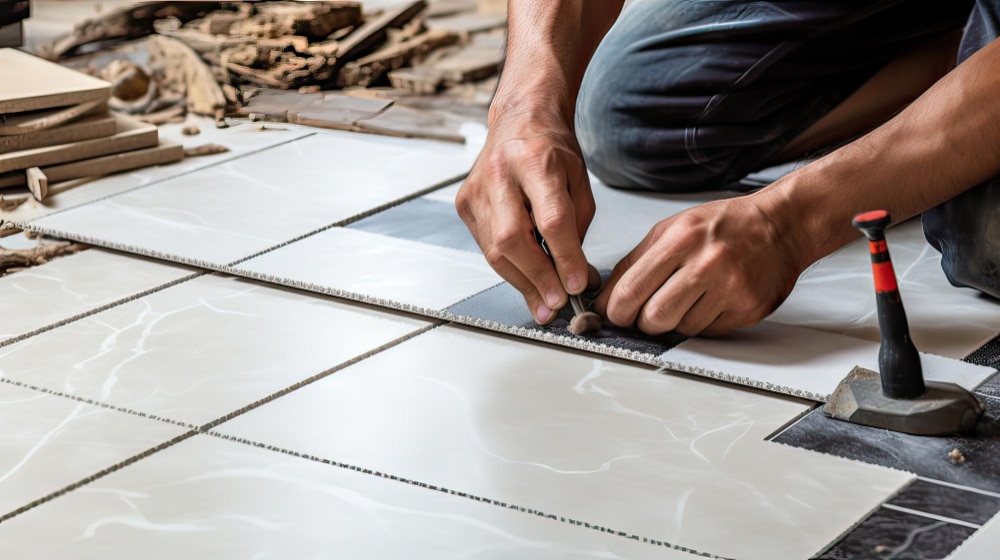
Tiles Selection: 6 Key Tips for Perfect Kitchens and Bathrooms
Are you planning to give your bathroom or kitchen a fresh new look? One of the most important decisions you’ll make is choosing the right tiles. Tiles are not just a practical necessity; they’re a style statement that can dramatically alter the look and feel of your space. Whether you’re going for a modern, sleek look or a more traditional feel, the right choice can make all the difference. Let’s dive into some key tips to help you pick the perfect tiles for your bathroom and kitchen.
Contents
1. Function First:
Before falling in love with a specific design or designs, think about the function of the area where it will be installed. Bathrooms and kitchens are high-traffic areas prone to moisture and spills. You need tiles that are not only beautiful but also durable and easy to clean. Porcelain and ceramic materials are popular choices due to their versatility and durability. They can withstand the hustle and bustle of daily life while maintaining their look.
2. Style Matters:
Your tiles should reflect your personal style and complement the overall design of your home. If elegance is what you’re after, natural stone tiles like marble can add a luxurious touch. Keep in mind, though, that they require more maintenance than other types. For a more rustic or earthy look, consider terracotta or slate tiles.
3. Tiles – Size, Layout, and Color:
The size and layout can affect the perception of space in your bathroom or kitchen. Larger tiles can make a small room appear bigger, while smaller, decorative tiles can add interest to a large, bland space. The color of the tiles also plays a crucial role. Lighter colors can brighten a room, while darker hues create a more intimate atmosphere.
4. Durability is Key:
In high-traffic areas, the durability is absolutely essential. Porcelains are known for their hardness and resistance to wear and tear, making them an ideal choice for busy kitchens and bathrooms. For areas that are not exposed to heavy use, you might consider other options like ceramic or glass tiles.
5. Maintenance and Care:
Some tiles require more maintenance than others. Natural stone tiles, for instance, often need to be sealed and periodically resealed. If you’re not up for the maintenance, consider tiles that are easy to clean and require less upkeep, like glazed ceramic or porcelain.
6. Budgeting and Samples:
Set a realistic budget for your tile project. Remember to factor in not just the cost of the material itself, but also installation and any additional materials like grout and sealants. Getting samples to see how the tiles look in your actual space can be incredibly helpful. It’s a small step that can save you from potential disappointment after the tiles are installed.
Installation: DIY or Professional?
Decide whether you will install the tiles yourself or hire a professional. While DIY can save money, professional installation ensures that the job is done right, which is especially important for more expensive tile options.
Choosing the right tiles for your bathroom or kitchen is a blend of practical considerations and personal style. It’s about finding the right balance between functionality, durability, aesthetics, and budget. With these tips in mind, you’re well on your way to selecting materials that will enhance the beauty and value of your home.
For more home improvement tips, tricks, and creative ideas, remember to connect with us on Instagram at @kitchenandbathshop! Our Instagram page is a treasure trove of inspiration, showcasing the latest trends, innovative designs, and practical advice for your kitchen and bathroom projects. Whether you’re looking for a quick DIY fix or planning a complete renovation, you’ll find a wealth of information and inspiration. We’re here to inspire, guide, and help you create the home of your dreams!
Frequently Asked Questions
How do I choose the right tile size for a small bathroom?
For small bathrooms, using larger tiles can create a perception of more space by reducing the number of grout lines. This makes the floor seem less cluttered. However, make sure the scale of the tiles is appropriate to the size of the room to avoid excessive cutting and waste.
Can I mix matte and glossy tiles in the same space?
Yes, mixing matte and glossy tiles can add depth and interest to your space. Matte tiles are great for floors due to their non-slip surface, while glossy tiles work well on walls or backsplashes to reflect light and make the room appear brighter.
What’s the best way to test tile samples in my home?
Place tile samples in the room where they will be installed to see how they look under natural and artificial lighting at different times of the day. This will give you a better idea of how the tiles will appear in your space.
Are porcelain tiles suitable for outdoor areas?
Yes, porcelain tiles are an excellent choice for outdoor areas due to their low water absorption rate, durability, and resistance to frost and temperature changes. Make sure to choose tiles with a suitable slip resistance rating for outdoor use.
How often should natural stone tiles be resealed?
Natural stone tiles should typically be resealed every one to two years, depending on the level of foot traffic and exposure to water and spills. It’s important to follow the manufacturer’s recommendations for the specific type of stone you have.



